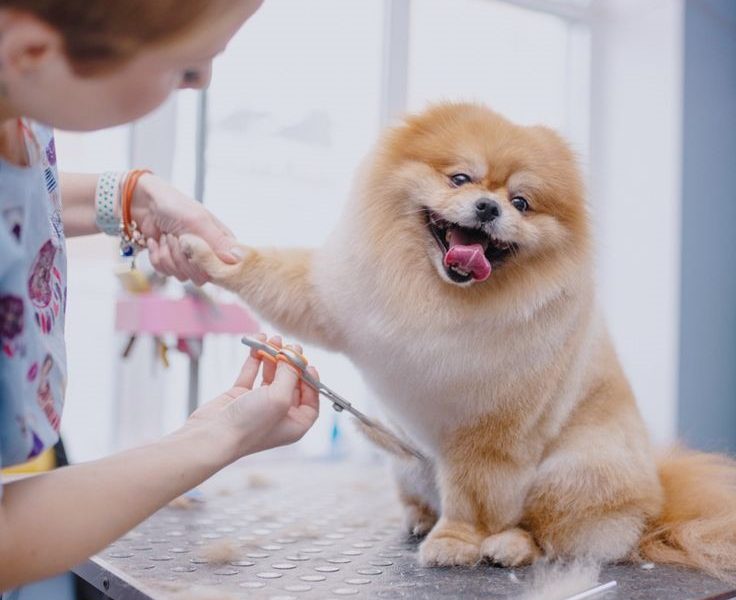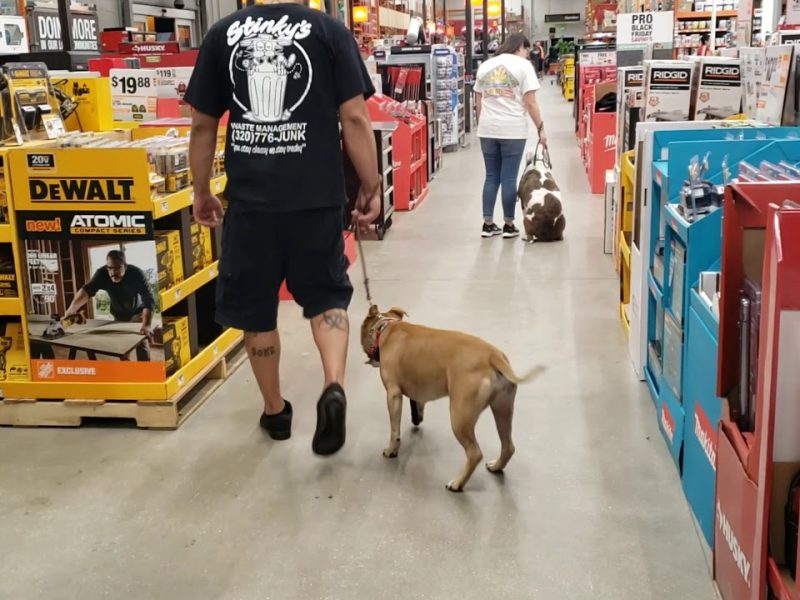For every dog owner, witnessing their beloved canine companion growl during a seemingly affectionate petting session can be a confusing and unsettling experience. Growling, often associated with aggression, can trigger worry that something is wrong with your relationship with your dog. However, before jumping to conclusions, it’s important to understand that growling is a natural form of communication for dogs, and it doesn’t always signify aggression. So, why does your dog growl when you pet him?

Contents
Decoding the Growl: A Range of Meanings
Dogs growl for a variety of reasons, and the context surrounding the growl is crucial for interpreting its meaning. Here are some common reasons behind a dog’s growl during petting:
Discomfort or Pain:
If your dog is injured, in pain, or experiencing discomfort in a specific area, they might growl when you touch that spot. This is a clear communication tactic, indicating they want you to stop petting them because it hurts. Look for signs of pain like flinching, whimpering, or licking the area excessively.
Overstimulation:
Some dogs, especially those with sensitive personalities, can become overwhelmed by excessive petting. While they might initially enjoy being petted, a growl could signal they’ve had enough and need a break. Pay attention to body language like flattened ears, averted gaze, or tucked tail, which can indicate overstimulation.
Fear or Anxiety:
An anxious or fearful dog might growl when approached or touched, even by someone they know. This growl is a warning sign, indicating they feel threatened and might react defensively if the petting continues. Look for signs of fear like tucked tail, trembling, or whale eyes (showing the whites of their eyes).
Resource Guarding:
If your dog growls while being petted near a prized possession like a toy or food bowl, they might be exhibiting resource guarding behavior. This growl signifies a possessiveness over the item and a warning to leave it alone.
Playful Growling:
Some dogs, particularly puppies, growl during play as a sign of excitement and enjoyment. This growl is often accompanied by playful body language like tail wags, open mouth, and bouncing around.

Identifying the Cause: Observing Your Dog’s Behavior
The key to understanding your dog’s growl lies in observing their body language and the situation surrounding the growl. Here are some tips:
- Location of the Growl: Notice where you’re petting your dog when they growl. Is it a specific area that might be sensitive? Are they nearing a prized possession?
- Body Language Cues: Pay close attention to your dog’s body language alongside the growl. Are their ears flattened, tail tucked, or eyes wide? These signs can indicate fear, anxiety, or discomfort.
- Intensity of the Growl: A low rumble growl is often a warning, while a high-pitched growl can indicate increased aggression. However, intensity isn’t always a clear indicator; observe your dog’s overall demeanor.
- Context of the Interaction: Consider what happened before the growl. Were you petting them for an extended period? Did you approach them suddenly? Understanding the context can provide clues about the trigger.
Responding to Your Dog’s Growl
Once you have a better understanding of why your dog might be growling, it’s crucial to respond appropriately. Here’s what to avoid:
- Punishment: Punishing your dog for growling can suppress this natural communication method and increase the risk of them escalating to biting without warning. Growling is a form of communication; address the underlying cause, not the growl itself.
- Ignoring the Growl: Ignoring a growl can be dangerous, especially if it’s a warning sign of fear or aggression. Take the growl seriously and address the situation calmly.

Building Trust and Positive Communication
The best approach is to create a safe and trusting environment where your dog feels comfortable communicating their needs. Here are some steps you can take:
- Respect the Growl: Stop petting your dog immediately when they growl. This shows you respect their communication and are willing to listen.
- Provide Space: Give your dog space to de-escalate if they seem anxious or fearful. Allow them to approach you on their own terms.
- Positive Reinforcement: Reward calm and relaxed behavior with treats, praise, or petting in areas they enjoy. This reinforces positive interactions and builds trust.
- Seek Professional Help: If you’re unsure about the cause of your dog’s growling or feel uncomfortable handling the situation yourself, consult a certified dog trainer or animal behaviorist. They can help you decipher the growl’s meaning, identify potential triggers, and develop a training plan to address the underlying issue. A professional can also ensure your safety and your dog’s well-being during the training process.

Preventing Growling in the Future
By understanding your dog’s communication style and respecting their boundaries, such as a Pug Dog, you can help prevent growling from occurring in the future. Here are some proactive tips:
- Petting Etiquette: Learn to read your dog’s body language and pay attention to their cues. Start petting gently and avoid sensitive areas. Stop petting when they seem overstimulated or uncomfortable.
- Positive Interactions: Focus on creating positive associations with petting. Offer treats or praise during calm petting sessions. This builds trust and makes petting an enjoyable experience for your dog.
- Respect Their Space: Not all dogs crave constant petting. Allow your dog to initiate interaction and respect their need for personal space.
- Socialization: Proper socialization from a young age can help prevent fear-based growling around people or other animals.
Remember, growling is a form of communication, not aggression. By understanding the reasons behind your dog’s growl and responding appropriately, you can build a stronger bond with your furry friend and ensure a safe and harmonious relationship.

Don’t Punish the Grumble:
For dog owners, a mid-pet growl can be alarming. However, growling is a natural canine communication tool, not always signifying aggression. This article explores the reasons behind dog growls during petting and emphasizes why punishment is counterproductive. Learn to interpret your dog’s growls, address the underlying cause, and build a stronger bond through positive reinforcement.
Living with a dog is a journey of mutual understanding and respect. By taking the time to decipher their communication and address their needs, you can create a happy and fulfilling life together.


